Monument Valley has some of the most iconic scenery in the American Southwest. If you’ve seen an image of the Southwest, you’ve probably seen Monument Valley. but there is much more to this area than the rock formations alone.
Would you like to learn more about this wonderful place? Here are 10 fun facts about Monument Valley that you never knew you needed to know!
🛏️TOP HOTEL PICK: Check availability now
🚘FIND THE CHEAPEST CAR RENTAL: Search Discover Cars for the best deals
✈️FIND THE CHEAPEST FLIGHTS: Search Skyscanner for the best deals
🧳GET TRAVEL INSURANCE: Get insured with Travelex before you go
📱TAKE AN AUDIO TOUR: Buy an audio tour now
No time right now to read these fun facts About Monument Valley? Pin It and save it for later:
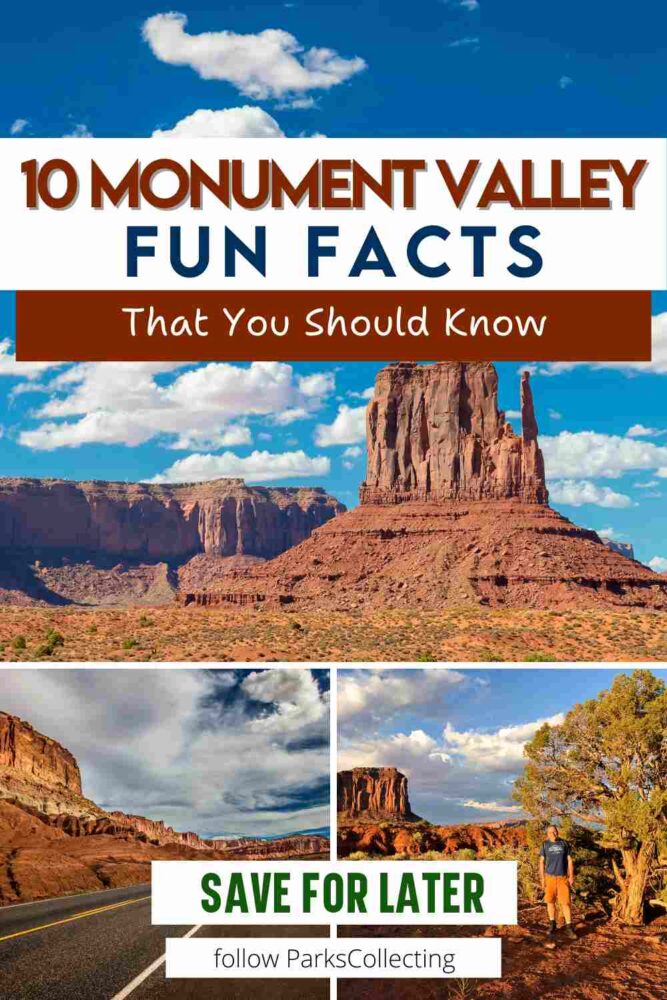
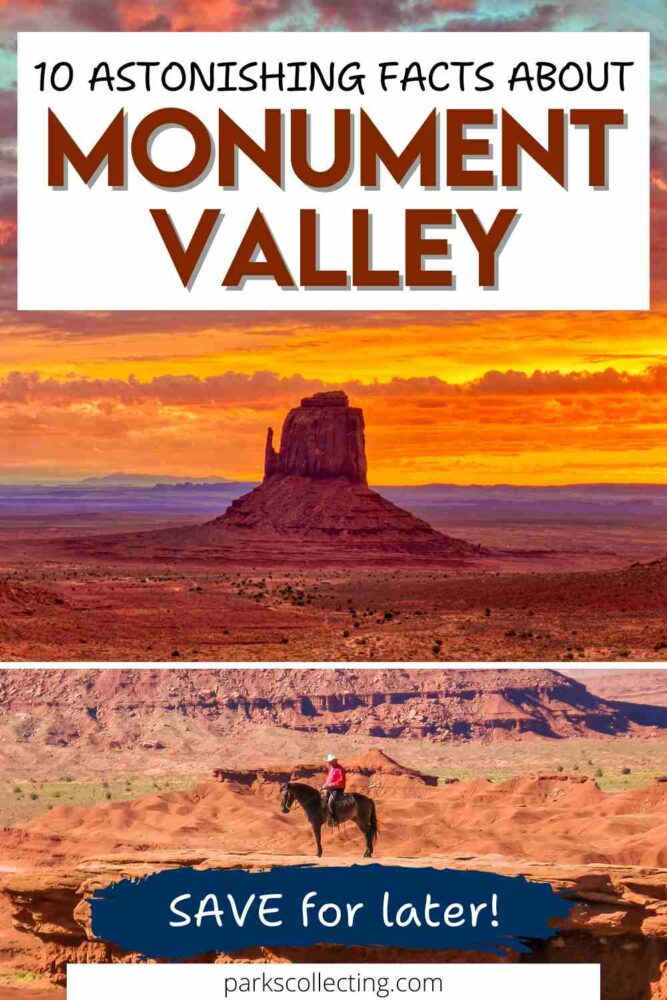
Subscribe to daily national parks planning tips, travel inspiration and trip ideas and I’ll send you a free PDF
10 Fun Facts About Monument Valley
Table of Contents
Basic Facts About Monument Valley
⭐ Location: On the Arizona-Utah border within the Navajo Nation Reservation
⭐ Size: 91,696 acres
⭐ Annual Rainfall: 7.17 inches
⭐ Highest Monument Valley Elevation: 7,096 feet
⭐ Lowest Elevation: 5,564 feet above sea level
⭐ Date it Became a National Park: It’s not a national park. The land is in the Navajo Nation and is officially called the Monument Valley Navajo Tribal Park. Its Navajo name is Tse’Bii’Ndzisgaii.
10 Fun Facts About Monument Valley
1. Monument Valley is part of the Navajo Nation
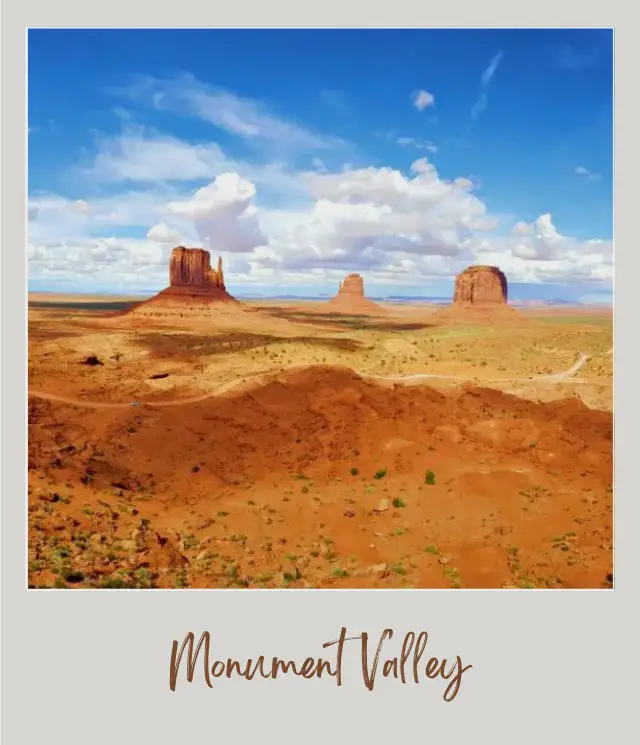
Monument Valley, known as ‘Tse Bi Ndzisgaii’ in Navajo, translating to “Valley of the Rocks,” is located within the borders of the Navajo Nation Reservation. This is why it is not a national park but a Navajo Tribal Park, which is a designation similar to a national park but on Navajo land.
As you explore the area, you’re not just a visitor—you’re a guest of the Navajo people, invited to witness the harmony between nature and the enduring traditions of the largest Native American tribe in the United States.
The park’s unique status means that your visit directly supports the Navajo community, ensuring that the beauty of Monument Valley and its cultural importance are preserved for generations to come.
2. Monument Valley has featured in multiple movies, TV shows and ads
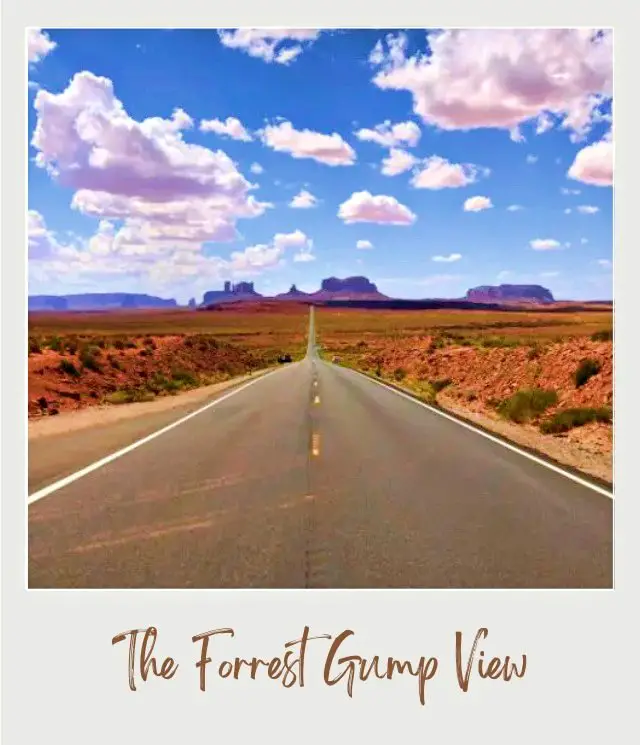
If Monument Valley’s towering buttes and sweeping vistas feel familiar, it’s probably because you’ve seen them on the big (and small) screen. This iconic landscape has played a starring role in the American film industry, especially in Westerns.
Legendary director John Ford was captivated by the valley’s cinematic potential and introduced it to audiences worldwide through his 1939 film, “Stagecoach,” featuring John Wayne. Ford’s vision set the stage for Monument Valley to become a symbol of the American West, its red sands and stark beauty providing the perfect backdrop for tales of frontier life.
From the golden era of Westerns to modern blockbusters, Monument Valley has been a go-to location for filmmakers looking to capture the essence of the untamed West. Its resume includes classics like “The Searchers” (1956) and “Fort Apache” (1948) as well as more contemporary hits such as “National Lampoon’s Vacation” (1983) “Forrest Gump” (1994) and “Transformers: Age of Extinction” (2014).
The valley’s unmistakable silhouette has also graced the world of advertising, perhaps most famously with Marlboro cigarettes and in a 1964 Chevrolet commercial that placed a convertible (with a woman sitting inside) atop Castle Rock, a butte not much bigger than the car. The car had to be flown in and placed atop the rock. These days, fortunately, there is a little more sensitivity to the preservation of the rocks and I don’t think this would happen anymore.
3. You can re-enact John Wayne’s most famous movie pose
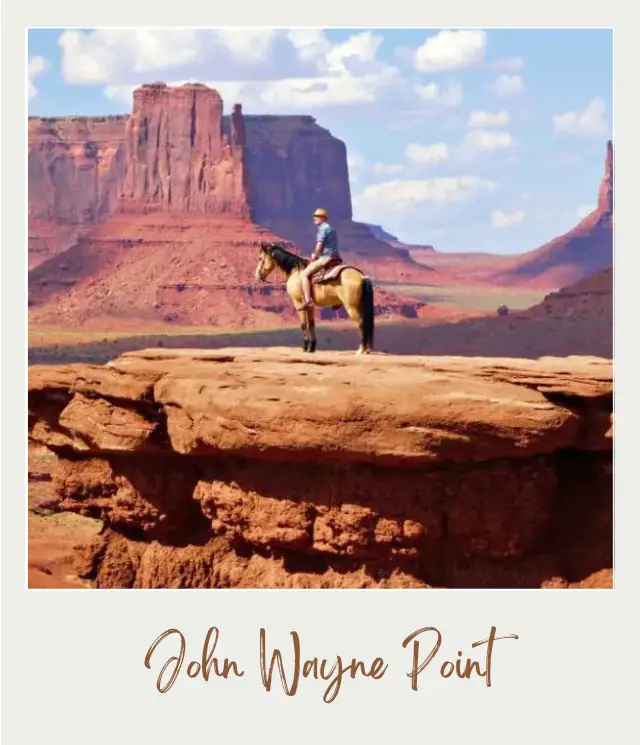
For fans of the classic Westerns and John Ford, Monument Valley offers a unique opportunity to walk in the footsteps of one of Hollywood’s most enduring stars, John Wayne. The Duke, as he was affectionately known, struck his most famous poses against the backdrop of the valley’s towering buttes and mesas.
You can re-enact one of those iconic moments, sitting on a horse where Wayne once sat, overlooking the same timeless landscape that captivated audiences decades ago.
You won’t be the only ones. The Lone Ranger and Tonto struck the same pose in the 2013 film, “The Lone Ranger.”
At the top of a cliff nowadays called John Ford’s Point, an enterprising local has a (very calm) horse standing there. For a small fee, you can climb up in the saddle, and with a carefully arranged camera angle, look like you’re at the top of a towering precipice, with the whole valley spread before you. (In reality, the cliff is not that high – though I still wouldn’t want to go over the edge).
4. You can drive only yourself through a small part of Monument Valley
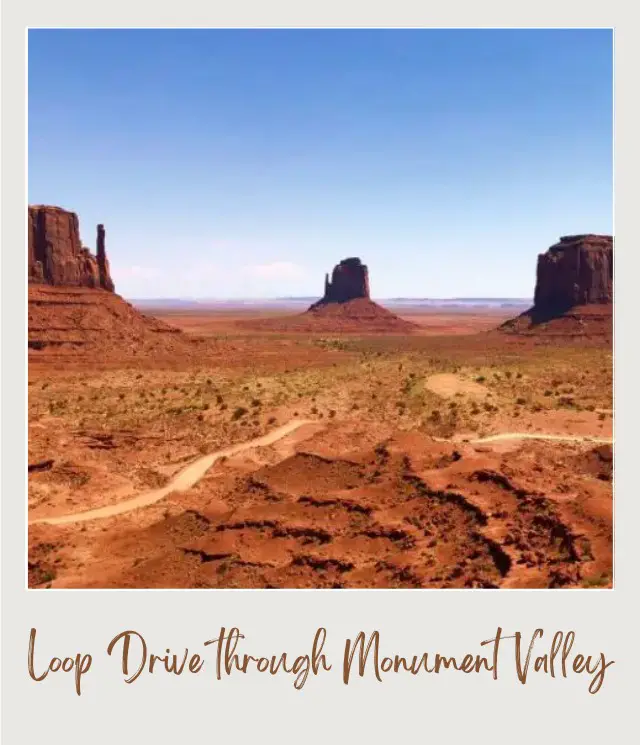
Because Monument Valley lies within the Navajo Nation, there is only one part of it that you drive by yourself – the 17-mile loop drive.
It’s a dirt road, but is passable by regular vehicles, though at some times of year, it can be pretty rough, and there’s a somewhat steep section right at the beginning.
RVs, trailers, and motorcycles are not permitted on the loop, however.
➡️ You can book a tour here on the scenic drive here if you can’t take your vehicle on the road (or if you just want a guide to explain more about what you’re seeing).
The road winds its way past the park’s most famous landmarks, including The Mittens and Merrick Butte. There are multiple pullouts and only a limited number of vehicles allowed on the road at any given time, so you can explore at your own pace.
While the loop drive offers a taste of the valley’s grandeur, the true depth of Monument Valley’s beauty lies beyond the road, in the backcountry that’s accessible only with a Navajo guide.
These guided tours provide an invaluable perspective on both the geology of the valley and the rich tapestry of Navajo culture. As you venture into the heart of the landscape, your Navajo guide will share stories and insights that deepen your appreciation of this extraordinary place. You’ll learn about the significance of the land to the Navajo people, the flora and fauna that inhabit it, and the delicate balance between preserving tradition and embracing modernity.
➡️ Book a Backcountry tour here
5. The valley gets its name from the distinctive rock formations
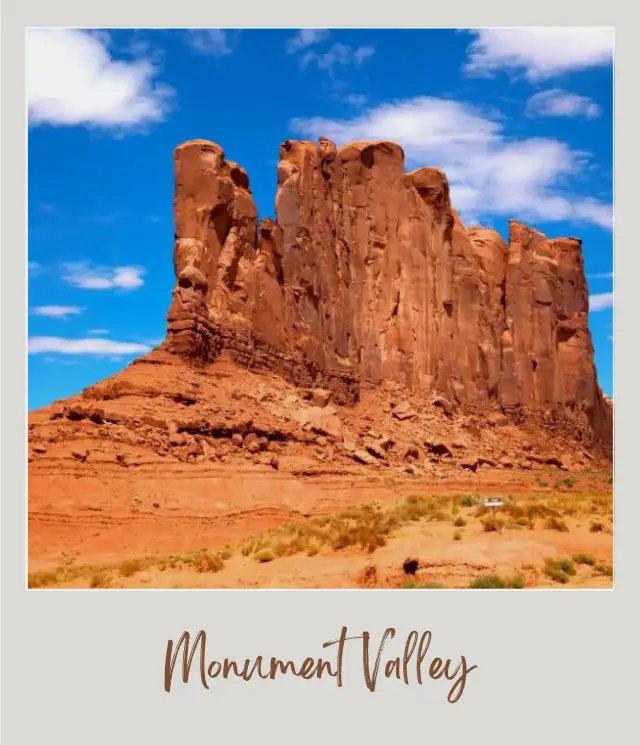
The distinctive rock formations – the ‘monuments’ that give the valley its name – include both buttes (smaller and narrower) and mesas (larger; Spanish for “table”).
These natural structures dominate the landscape, with some reaching over 1,000 feet above the plateau floor. Erosion is responsible for sculpting these formations over millions of years, as rainwater, wind, and ice wore away the softer layers of earth, leaving the harder Caprock to stand tall against the sky.
The Caprock can also succumb to the elements and can tumble down the sides of the buttes, leading to the creation of scree or talus at the base of the buttes.
As you explore Monument Valley, you’re witnessing an ongoing story of transformation—one where nature’s artistry is on full display.
6. There is only one trail that you can hike in Monument Valley without a guide
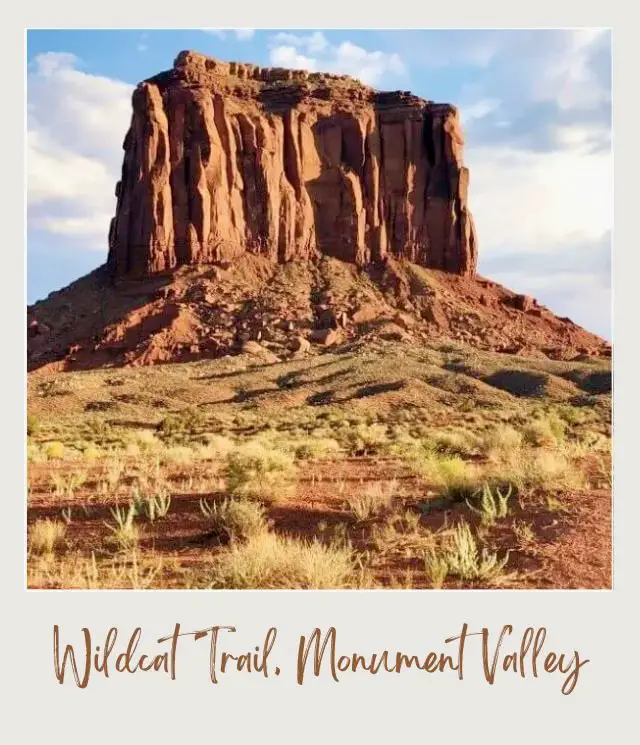
If you’re like me and love to hike, you’ll appreciate that there is one trail that you can hike by yourself. Because this is Navajo land, all the other trails require a Navajo guide. The Wildcat Trail provides a rare opportunity to experience the majesty of the valley up close, without the need for a guide.
The trail leaves from near The View campground, and circles around the iconic West Mitten Butte, allowing you to see how its shape seems to change from different perspectives.
Before you hike the trail, register at the nearby Visitor Center. And be aware that the trail is often closed in the middle of the day in the hotter months for safety reasons. It’s actually nicer in the early morning and late afternoon light, so this restriction isn’t a hardship.
➡️ READ MORE: My guide to hiking the Wildcat Trail
7. Mike Goulding helped put Monument Valley on the map
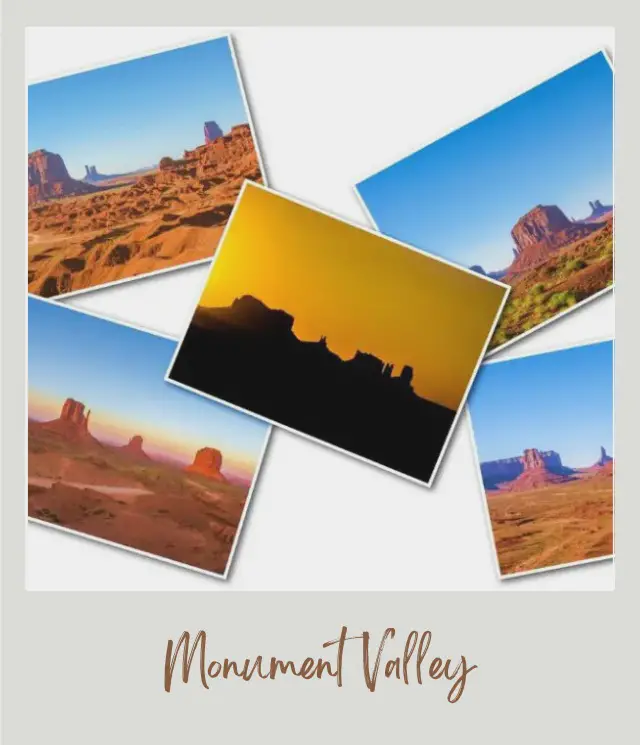
The story of Monument Valley’s rise to fame is incomplete without mentioning Mike Goulding, a sheep herder who saw the potential for tourism in the region.
In the early 20th century, Monument Valley was known only to the Navajo and Paiute tribes and a few intrepid explorers. Goulding, alongside his wife, established a trading post on the Utah side of the valley. The Gouldings didn’t just trade goods; they forged deep connections with the Navajo people, becoming a part of the community and its history.
The 1930s brought hardship to Monument Valley, as drought, economic depression, and government policies took their toll on the Navajo and Paiute livelihoods. Goulding believed that the valley’s unique beauty could attract visitors and help support the local economy.
In a bold move, he took photographs of the valley to Hollywood, capturing the attention of filmmakers and eventually leading to the valley’s starring role in John Ford’s “Stagecoach.”
This marked the beginning of a new era for Monument Valley, transforming it from a secluded desert landscape into an iconic symbol of the American West.
Today, there is a hotel, campground, and shop complex on Goulding’s former property (and bearing his name still). It provides panoramic views of Monument Valley.
➡️ Check availability at Goulding’s Lodge here
➡️ READ MORE: Tall Sheep: Harry Goulding, Monument Valley Trader, by Samuel Moon
8. The red color of the stones is formed by a chemical process

The red color that defines Monument Valley’s landscape is not just visually striking; it’s also a clue to the region’s geological makeup.
The red color comes from iron oxide, or rust, which is present in the siltstone that forms the valley’s structures. This natural pigment paints the valley in shades of red and orange.
But the valley’s color story doesn’t end with red. In places, the rocks take on a blue or gray hue, a result of manganese oxide that also exists within the stone.
The interplay of these colors creates a stunning visual tapestry that is unique to Monument Valley.
9. You can’t climb the buttes and mesas
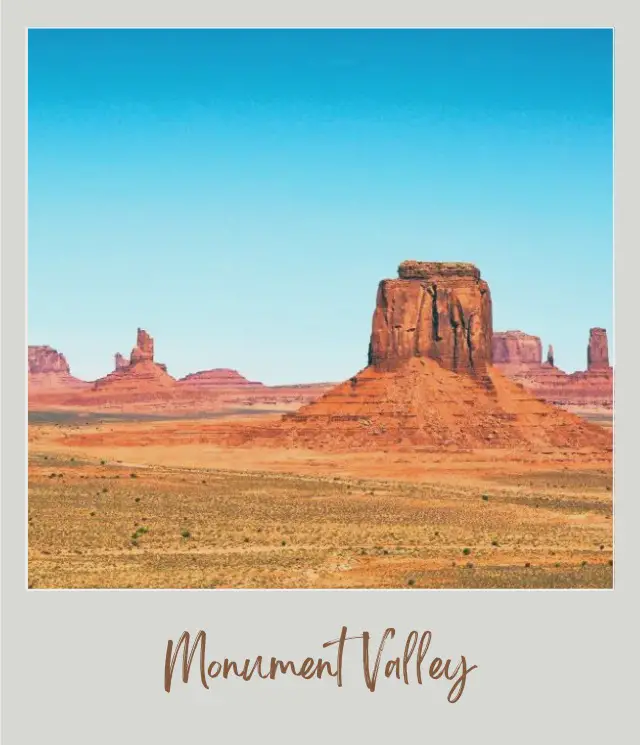
While the towering buttes and mesas of Monument Valley may look like a climber’s paradise, scaling these formations is strictly prohibited.
This ban on climbing isn’t specifically due to the rocks being sacred to the Navajo people—although many sites within the valley do hold spiritual significance. Instead, the restriction is in place because the rock formations are composed of sandstone, which is prone to erosion and damage.
Not only is climbing these structures dangerous for individuals, as the rocks can crumble and give way without warning, but it also poses a risk to the integrity of these ancient natural sculptures.
By keeping climbers off the buttes and mesas, we help preserve the beauty and stability of Monument Valley for future generations to enjoy.
10. You can go horseback riding through Monument Valley
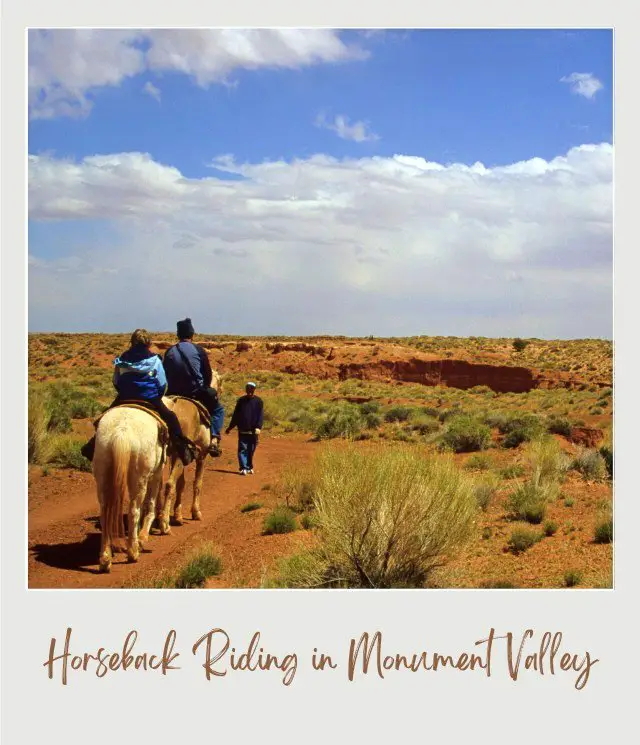
For a truly immersive experience of Monument Valley’s grandeur, you can take to the trails on horseback.
Horseback riding through the valley offers a unique perspective and a nod to the traditional modes of transportation used by the Navajo people for centuries (and all those cowboys in those Western movies!).
As you ride along the sandy paths, with the iconic backdrop of towering stone spires and vast, open skies, you’ll feel a connection to the old wild west and the rich history of the area.
Local Navajo guides can lead you on these adventures, sharing stories and insights into the Navajo culture and the valley’s history along the way.
➡️ Book a guided horseback tour through Monument Valley here
Subscribe to daily national parks planning tips, travel inspiration and trip ideas and I’ll send you a free PDF
10 Fun Facts About Monument Valley
More Information About Monument Valley
Are you feeling inspired to visit Monument Valley Park, Utah? Start planning your trip now with these guides:
⭐ Monument Valley Guide
⭐ Planning A Trip To Monument Valley: 7 Mistakes To Avoid
⭐ Guide To Hiking The Wildcat Trail
⭐ How To Get To Monument Valley
⭐ All the The Airports Near Monument Valley
⭐ The Closest Airport To Monument Valley
⭐ The Best Time To Visit Monument Valley
⭐ Visiting Monument Valley: What To Expect Throughout The Year
⭐ 10 Tips For Visiting Monument Valley
⭐ Best Books about Monument Valley
Do you have any other fun facts about Monument Valley to share? I’d love to hear them. Join my private Facebook group National Parks Collectors and comment and let me know (you can also pick up extra planning tips, share your photos and stories with other national park lovers and more).
If you liked this article, Pin It to your Monument Valley board!


💡 Are you just starting to think about taking a southwest trip? Get Inspiration
‼️ Are you looking for helpful tips for visiting US national parks? Read articles that share useful tips on a range of national-park related issues
💻 Are you starting to plan a trip to Monument Valley? Read my Guide to Monument Valley
💲 Are you ready to book your trip? Use these Planning and Booking Resources
📖 Do you want to read a book about Monument Valley? Check out my Recommended Reading List
About the Author
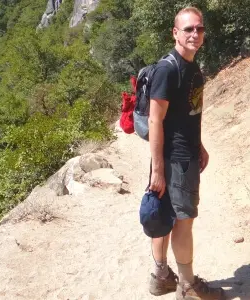
James Ian is a national park, camping and hiking expert.
He has dedicated his life to travel, visiting more than 80 countries, all 7 continents and most of the national parks in the United States. With over 35 years experience in the travel industry, James has worked on cruise ships, at resorts and hotels, and as a travel planner who’s helped hundreds of people plan successful trips to US national parks.
Based on his experience visiting our national parks multiple times, in-depth research and expertise as a travel planner, James has published detailed itineraries for many of the major national parks in the US. These itineraries, as well as in-depth park guides, and other resources will help you have your own incredible trip to US national parks without stress and hassle.
As a national park expert, James has contributed to many publications, including USA Today, Newsweek, Time Business News, Savoteur, Best Trip, and Wired.
I’m a member of the Amazon Services LLC Associates Program. As an Amazon Associate I earn from qualifying purchases.
